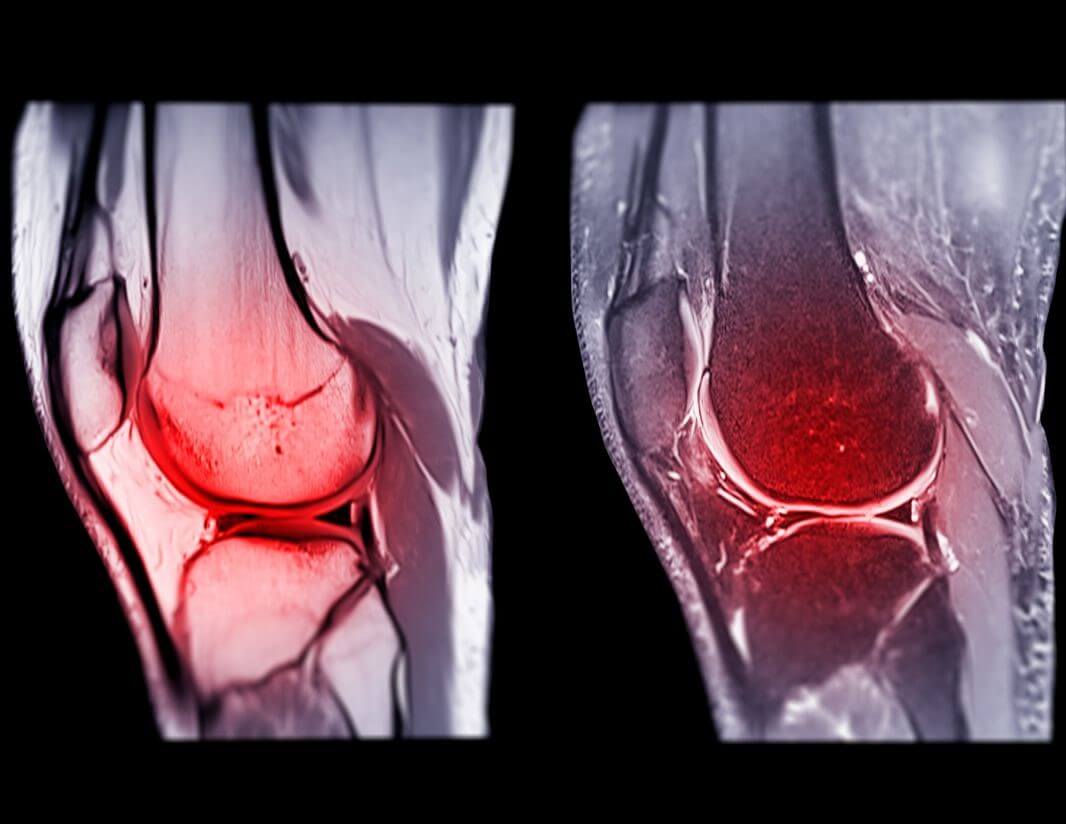
All About ACL Ruptures
Your team is winning, but this moment is crucial. You plant your foot and pivot (as you’ve done a million times before). But you don’t hear cheers – instead, you hear a popping sound. You feel your knee give way beneath you. And then you feel pain… You may have torn your ACL – Anterior Cruciate Ligament (and possibly lost the game – sorry). You want to know what’s happened, what you can do about it, and what you can do to make it less likely this happens again. As physiotherapists, we have the answers you need so read on to find out more.
What is the ACL?
To answer that we need to give you a bit of a crash course in the anatomy of your knee – bear with us. The Femur (the thighbone), the Patella (the kneecap), and the Tibia (shinbone) all connect at the knee. Four ligaments: the MCL, LCL, ACL, and PCL work together to stabilize the joint. Wow – that was an awful lot of acronyms, wasn’t it? ACL simply stands for Anterior (the front) Cruciate (like a cross) Ligament (a strong, fibrous band of tissue that connects bones, in this case, the femur and tibia.) The cruciate ligaments run diagonally across the knee, providing stability and limiting the lateral and rotational movement in the joint. They’re crucial (“crucial cruciate” – that’s fun to say!) to activities like running, jumping, and changing direction. But if we push them, especially with sudden force to pivot (especially with a foot planted) they can tear. No wonder it happened during that netball game, huh?
Now, the ACL is composed of two main bundles of fibers, known as the anteromedial bundle (AMB) and posterolateral bundle (PLB), which work together to resist different types of forces on the knee joint. The AMB is tighter and stiffer, providing stability when the knee is extended, while the PLB is looser and more flexible, allowing for controlled motion when the knee is bent.
While both the anteromedial bundle (AMB) and posterolateral bundle (PLB) of the ACL can be torn, it seems that tears of the AMB are more common. Possibly because it’s the tighter and stiffer of the two bundles and therefore more susceptible to injury. Or possibly because the knee is more likely to be straight (or even locked) when you perform sudden twisting or pivoting movements…. This is a lot of words to remind you to do what coaches and trainers have been saying for years – land with bent knees when practising jumps!
Why Me?
It’s an incredibly common injury, especially amongst athletes who pivot or change direction while running or jumping. (Football, netball, basketball, dance…) It’s also more common among women than men. This is thought to be because they have a smaller intercondylar notch (the groove between the bumpy bits at the end of the femur) and possibly because wider pelvises cause the femur to run at a greater angle to the knee.
Other risk factors include inappropriate footwear (too much friction between you and the ground) muscle laxity, flat feet, and poor form. So, for the future, make sure you wear the right shoes for you (which might include orthotics) and train the correct form for jumping and pivoting into your muscle memory so diligently that a sloppy landing or rushed pivot becomes nearly impossible. We also recommend specific work on balance as a preventative as well as for rehabilitation.
OK – But What Do I Do Now?
It will depend on the nature and severity of your injury. We highly recommend you come in and see us at Next Generation Physiotherapy as soon as you possibly can so we can assess the injury and advise you.
And there you have it, everything you wanted to know (and probably some that you didn’t) about your ACL. Whether you’ve had a minor strain or a complete tear we are here to help. Call us at (08) 9203 7771 to make an appointment with one of the physiotherapists at Next Generation Physiotherapy today. You can also follow us on Facebook or Instagram for more helpful information.
References
Nessler, T., Denney, L., & Sampley, J. (2017). ACL Injury Prevention: What Does Research Tell Us? Current reviews in musculoskeletal medicine, 10 (3), 281–288. https://doi.org/10.1007/s12178-017-9416-5
Physiopedia. (ND) Anterior Cruciate Ligament (ACL) Injury [Online] Available at https://www.physio-pedia.com/Anterior_Cruciate_Ligament_(ACL)_Injury. Accessed on 21/04/23.
